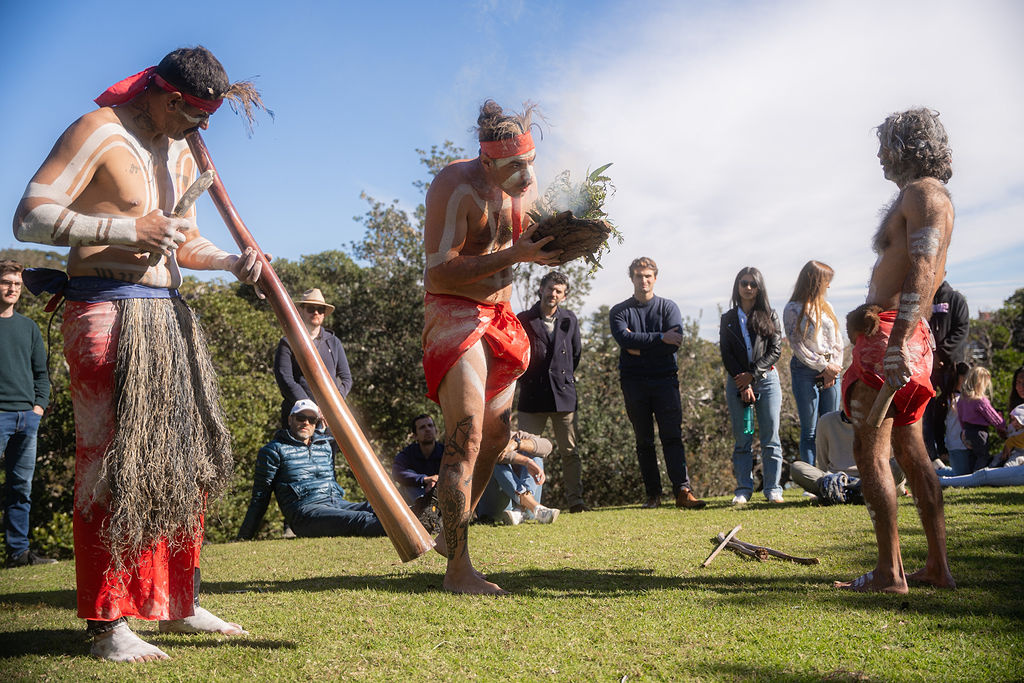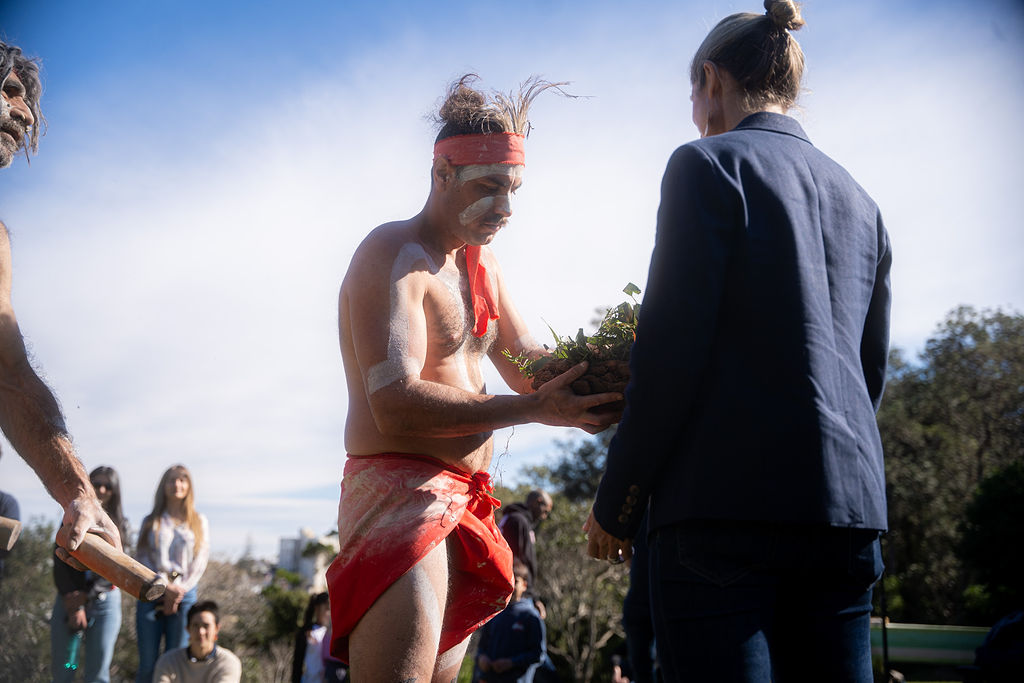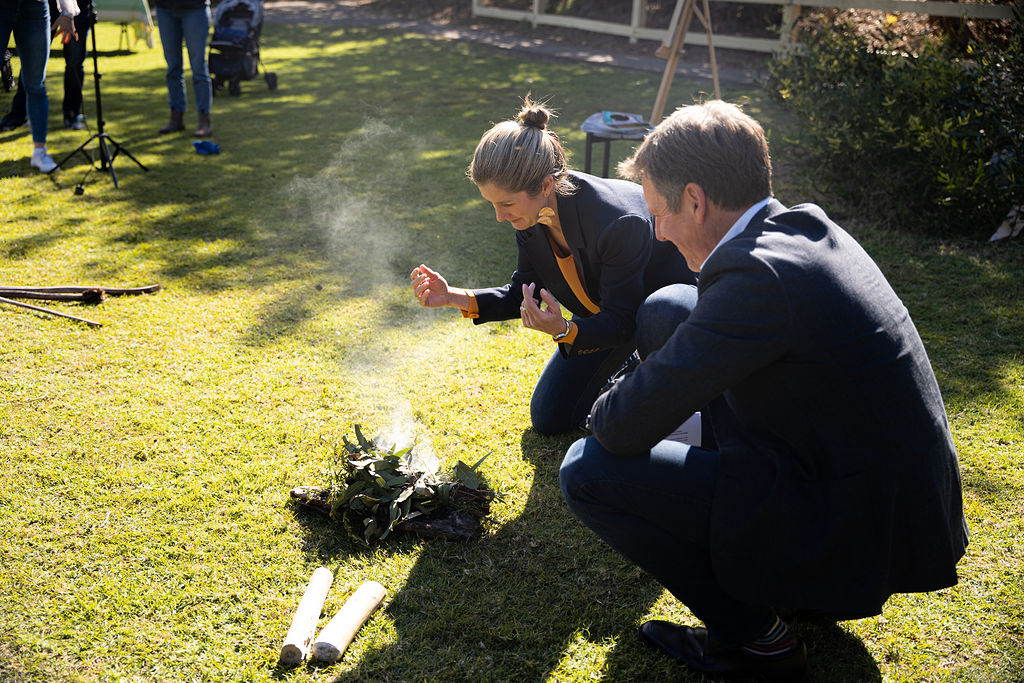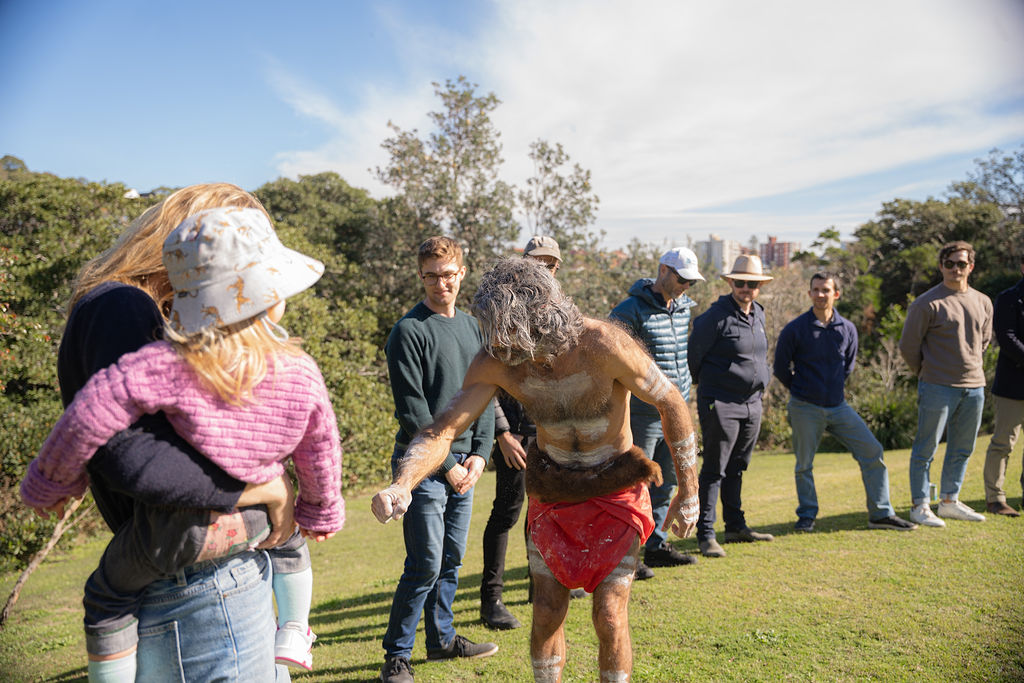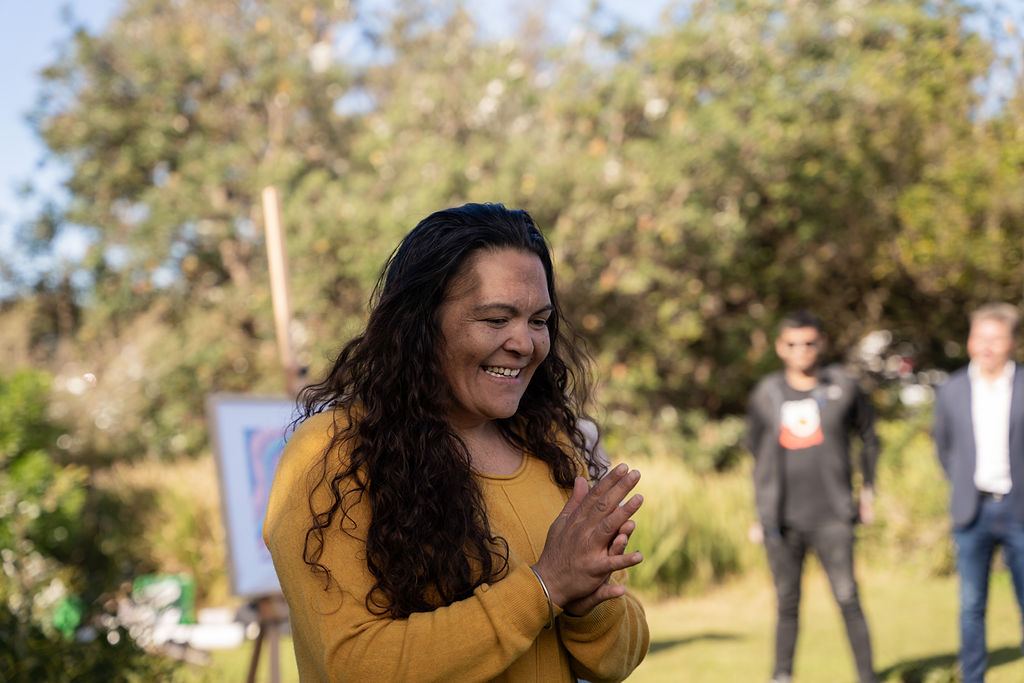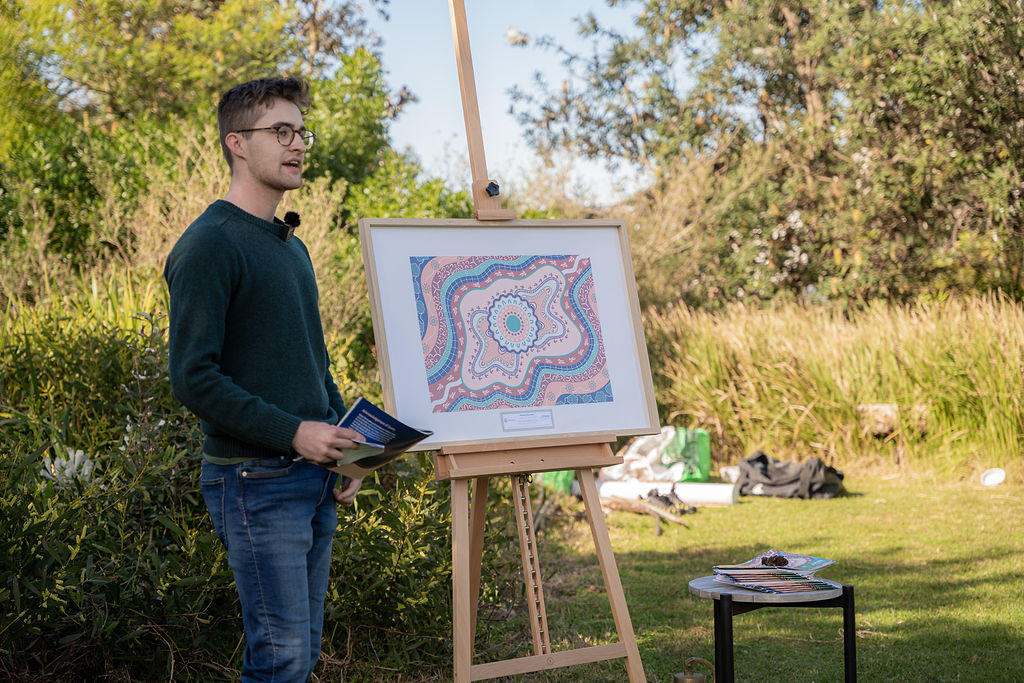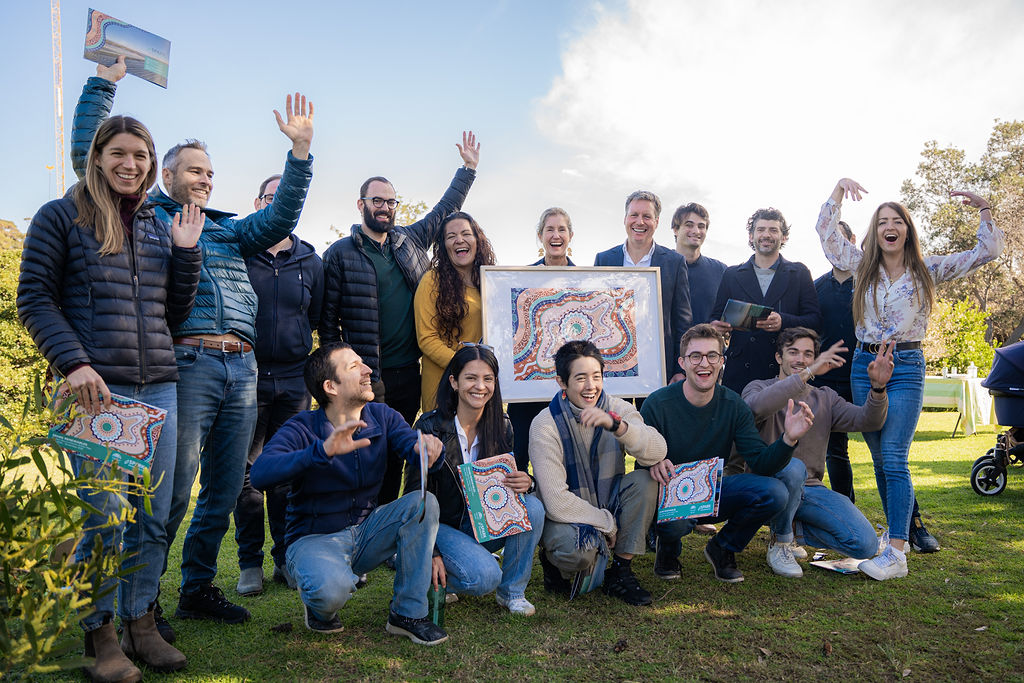Spark Renewables launches its Reflect RAP
We were deeply honoured to have Leslie McLeod, a respected Yuin, Dharawal and Ngarigo Custodian and loreman, deliver a Welcome to Country for Spark Renewables at our recent RAP launch, a significant milestone in our reconciliation journey.
The Smoking Ceremony connected us deeply with the natural environment around us, allowing us to engage in spiritual and physical cleansing through this ancient tradition.
Understanding the significance of a Smoking Ceremony
A smoking ceremony is an ancient custom among Aboriginal communities, involving the smouldering of various native plants to produce smoke with cleansing, purifying properties, believed to ward off bad spirits. This tradition, one of the oldest ceremonies still performed today, has been practiced for centuries.
Depending on the occasion, these ceremonies serve multiple purposes, including healing, spiritual renewal, and strengthening, as well as marking significant life events such as births and mourning periods (known as Sorry Business). Additionally, they can be used to cleanse objects that have crossed cultural boundaries.
Both Indigenous and non-Indigenous individuals can request smoking ceremonies. However, due to their profound cultural significance, they are conducted only with the approval and guidance of Aboriginal and Torres Strait Islander communities, with careful consideration of the appropriate timing.
We took this opportunity to pay our respects to the land of the Cameragal people, where the Spark Renewables office stands, and where our team gathers each week.
Telling our story
Our vision – to develop, own and operate renewable energy assets that lead the renewable energy transition in Australia – was beautifully represented in the Dhurga language, through the stunning RAP artwork created for us by the talented artists at Yirra Miya.
The artwork tells the story of Spark Renewables, where the colours represent our coastal head office and our inland development projects. The elements depict our role in working with local community members, learning from their knowledge and sharing expertise toward the development of renewable energy projects.
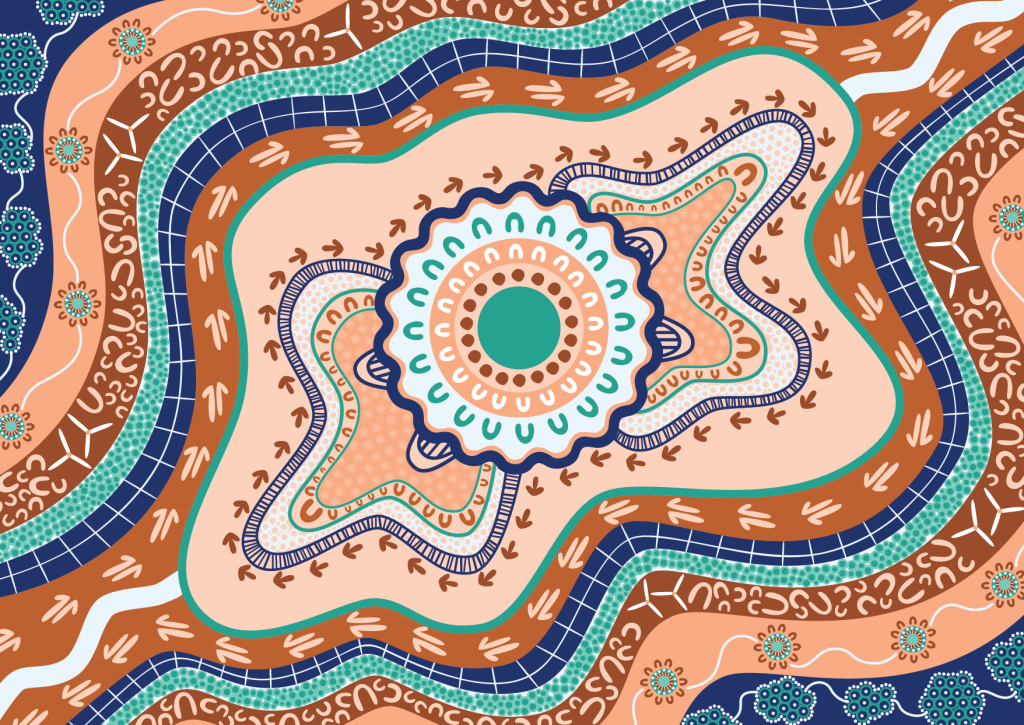
The connected yarning circles represent our commitment to continue to grow and remain teachable on cultural safety. The wind turbines and solar panels represent the energy forms we harness, while the emu ‘Dinawan’ tracks are a specific reference to our Dinawan Energy Hub. The people symbols represent the connections made through our projects.
These elements all come together in the final artwork; representing the sharing of knowledge, our growth journey, and acknowledgement of the land we work on, as being Aboriginal land.
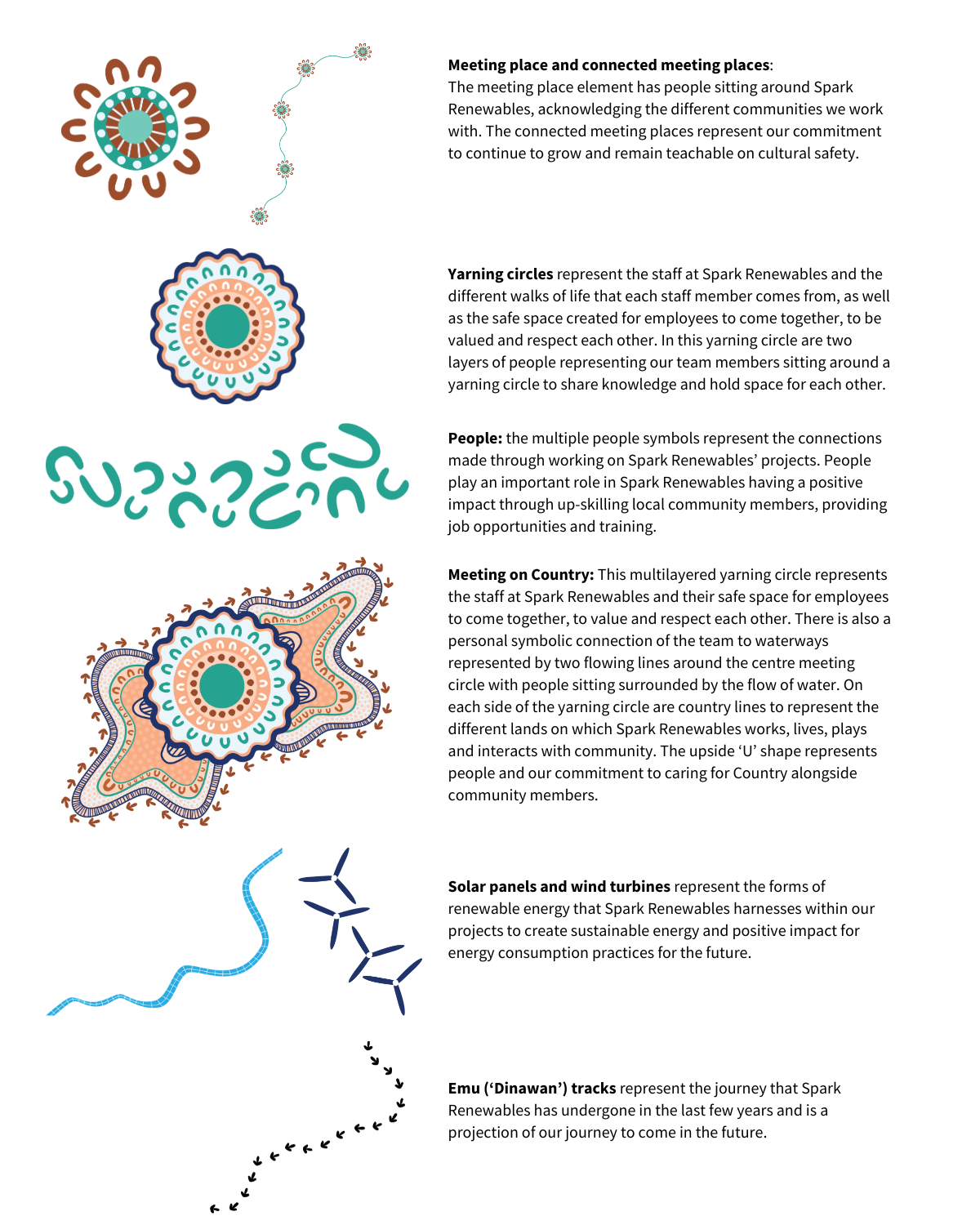
Spark Renewables’ Reconciliation Action Plan coming together
We were fortunate to have Leslie McLeod perform this sacred ritual to mark the launch of Spark Renewables’ Reflect Reconciliation Action Plan. Crucially, our Reconciliation Action Plan includes content from every Spark Renewables employee, and has been strongly supported by the senior leadership team.
Reflecting on the process of reconciliation, Spark Renewables’ CEO, Anthony Marriner, said in the Reconciliation Action Plan:
“Coming from South Africa, the idea of reconciliation and respect for the Custodians of the land resonates very powerfully for me. There was much pain and suffering in South Africa until we went through the reconciliation process, which helped to heal the nation and empower the people.
Every person has the right to be treated with respect and kindness.
As I grow to understand Australia better, I can see that there is a need for reconciliation here as well, and that that desire is genuine and heartfelt. I am delighted that we can play a material role in this as it aligns directly with our values.
At Spark Renewables, we will be developing and constructing many wind, solar and battery projects over the coming years. We have always placed the community first and are proud to have established what is to our knowledge at the time of construction the largest solar farm community fund in Australia.
We acknowledge our obligation to ensure that we work closely with Aboriginal and Torres Strait Islander peoples and are always respectful of their land and their wonderful and rich cultures, which need to be preserved and cherished. In addition, we see an opportunity to make a massive positive difference to the lives of the communities that are impacted by our projects.
Our modus operandi is to make an on-the-ground impact in a way that is measurable and meaningful and focuses on those most in need – our ongoing support of the Girls at the Centre program at Mt Austin High School in Wagga Wagga, where over 40% of the students identify as Indigenous, is just one example of this.”
You can read more reflections on reconciliation from our team members here.
We are grateful to our Aboriginal Engagement Coordinator Shaurntae Lyons, whose guidance and encouragement have been instrumental in preparing our first Reconciliation Action Plan. Shaurntae plays a critical role in our engagement with First Nations communities and in developing inclusive partnerships with First Nations People and organisations across our renewable energy projects. She brings a deep cultural knowledge that supports the planning and implementation of all our projects and has helped to connect with communities at our Dinawan Energy Hub and Mallee Energy Hub.
To develop and track progress against our commitments, the team has established a ‘RAP Working Group’ comprising Claire Dawson, Sean O’Beirne, Georgia Tovich, Shaurntae Lyons, ?Paulina Kabaczuk, Julian Kasby, Alexis Tubb, PMP, Laurie Wallis, and Marju Tonisson.
